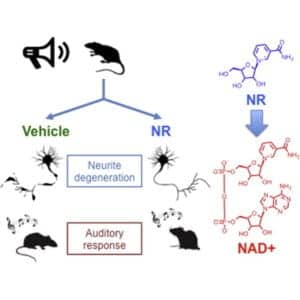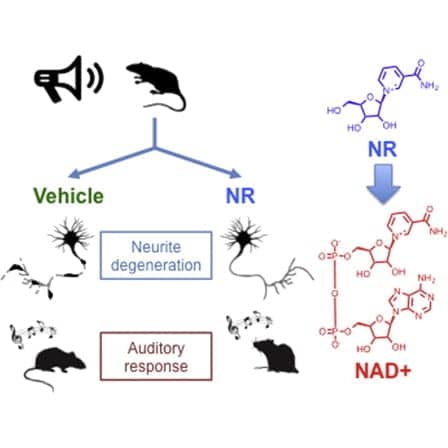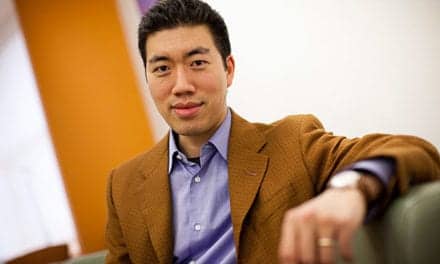Research conducted at Weill Cornell Medical College and the Gladstone Institutes shows that using a precursor to vitamin B3 to elevate the activity of a certain protein could help prevent noise-induced hearing loss. According to a study paper published in the December 2, 2014 edition of Cell Metabolism, researchers conducted mouse experiments using a simple chemical compound called nicotinamide riboside (NR), a precursor to vitamin B3. Their findings have important implications not only for preventing hearing loss that is linked to this protein, but also potentially for treating some aging-related conditions that are linked to the same protein.

Kevin Brown, MD, PhD, associate professor of otolaryngology at University of North Carolina School of Medicine.
The study paper states that in their mice studies, the researchers used NR to protect the nerves that innervate the cochlea (inner ear). The cochlea transmits sound information through these nerves to the spiral ganglion, which then passes along those messages to the brain. Exposure to loud noises damages the synapses connecting the nerves and the hair cells in the cochlea, resulting in noise-induced hearing loss. ?The researchers set about trying to prevent this nerve damage by giving mice NR before or after exposing them to loud noises. NR was reportedly successful at preventing damage to the synaptic connections, avoiding both short-term and long-term hearing loss. Further, the study showed that NR was equally effective regardless of whether it was given before or after the noise exposure.
“One of the major limitations in managing disorders of the inner ear, including hearing loss, is there are a very limited number of treatments options,” said Kevin Brown, MD, PhD, associate professor of otolaryngology-head and neck surgery at the University of North Carolina School of Medicine, and first author on the paper. “This discovery identifies a unique pathway and a potential drug therapy to treat noise-induced hearing loss.” Brown conducted the research while at Weill Cornell.
The researchers chose NR for their study because it is a precursor to the chemical compound nicotinamide adenine dinucleotide (NAD+), which had previously been shown by Dr Brown and co-senior author Samie Jaffrey, MD, PhD, to protect cochlea nerve cells from injury. However, NAD+ is an unstable compound, calling into question whether it could be used in a live animal. This concern led the scientists to use NR instead.
“NR gets into cells very readily and can be absorbed when you take it orally, said Dr Jaffrey, a professor of pharmacology at Weill Cornell. “It has all the properties that you would expect in a medicine that could be administered to people.”

Source: Weill Cornell Medical College, Gladstone Institutes, and Cell Metabolism
Image credits: Robert Essel, Cell Metabolism




